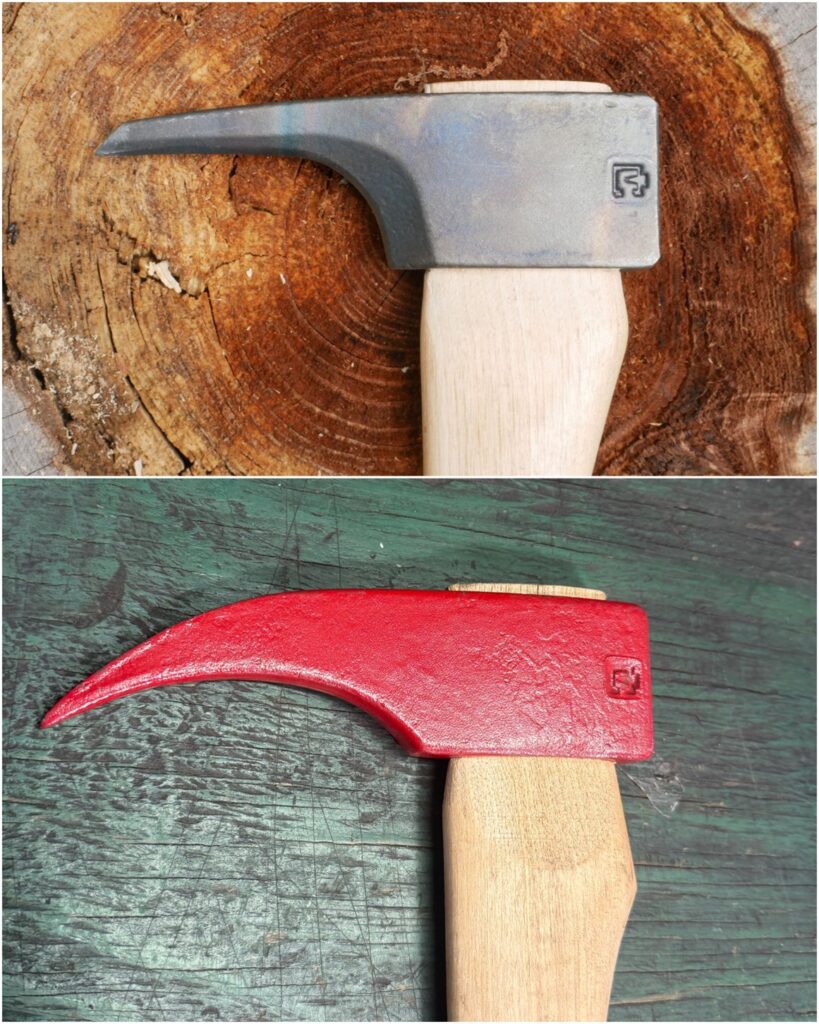Hookaroon vs. Pickaroon: Logging History, Design Differences, and Their Lasting Value
Before the advent of heavy machinery in the late twentieth century, moving timber from the forest to the mill required ingenuity and muscle. Woodsmen developed a range of specialized hand tools to make the work possible. Among the most enduring were the hookaroon and pickaroon—tools that, while often confused with one another, evolved for very different purposes and remain indispensable for certain jobs today.
A Look Back: Pickaroon, 1850s
The pickaroon has been around for centuries. One example (1st Picture) from the mid-1800s was forged by a blacksmith directly from bar stock. The steel spike was pounded into shape at the forge, hand filed, and fitted with a simple wooden handle. Measuring about 28 ½ inches long with a 7-inch head, this tool was essential to the timber harvester.
In those days, a woodsman felled trees, trimmed branches, and used the pickaroon to pull away the brush before the log was hauled to a river and floated downstream to a mill. The design was simple yet incredibly effective. Proof that necessity drives timeless innovation.
Design Differences: Hookaroon vs. Pickaroon
At first glance, both tools look nearly identical: a long handle (usually 24–36 inches) with a sharp spike set at the appropriate angle. But the difference lies in the details:
- Hookaroon
- Spike curves back toward the handle, forming a hook.
- Bites deep and stays in place, making it ideal for muscling unbucked logs, slash, and debris.
- Suited for brute force work in the woods.
- Pickaroon
- Spike points away from the handle, forming a beak.
- Bites and releases quickly, allowing for fast, repetitive handling of cut logs and firewood.
- Perfect for loading, stacking, and processing wood with minimal bending.
Rule of thumb: The hookaroon is best for moving heavy, uncut logs in the woods. The pickaroon shines when handling firewood or cut logs at the landing, yard, or home.
Why They Still Matter
Even in today’s world of chainsaws, skidders, and hydraulic splitters, these tools retain their place. A pickaroon saves the back when stacking firewood, and a hookaroon can clear slash more efficiently than any powered machine. They’re specialized tools with no real substitute.
Carrying the Tradition Forward
At Council Tool Company, we’ve been forging tools for American woodsmen since 1886. While many of the tools of the timber trade have faded into history, we still proudly manufacture both hookaroons and pickaroons in North Carolina.
Our designs blend tradition with modern materials- offering classic wooden-handled versions alongside updated models with fiberglass composite handles. Whether you’re working a small woodlot, processing firewood, or simply appreciating the heritage of American logging tools, Council Tool continues to keep these time-tested designs alive and ready for use (2nd Picture).
Credit:
J Patrick Moran – Timber Therapy
Maine Memory Network
Grays Harbor Historical Seaport

